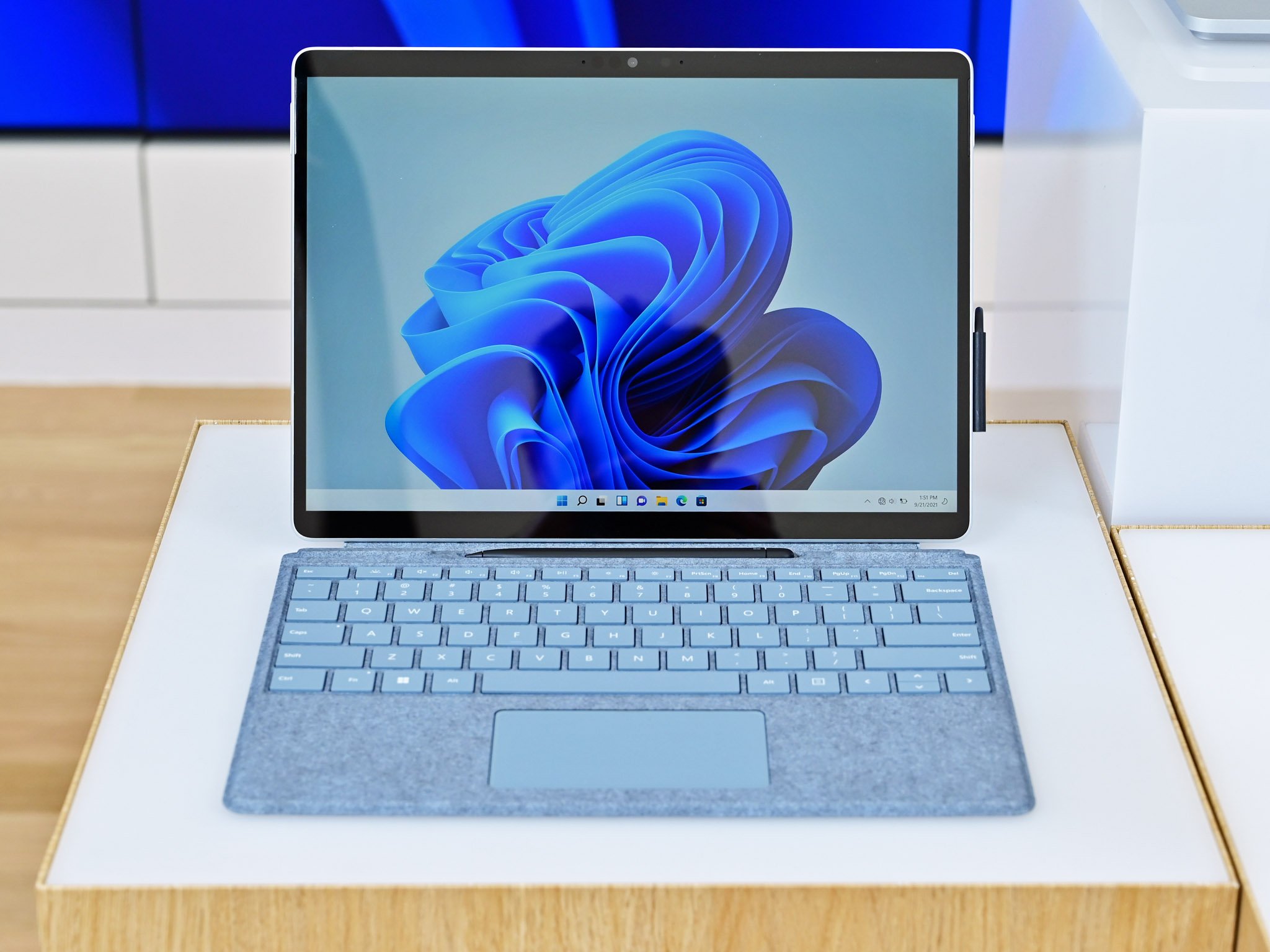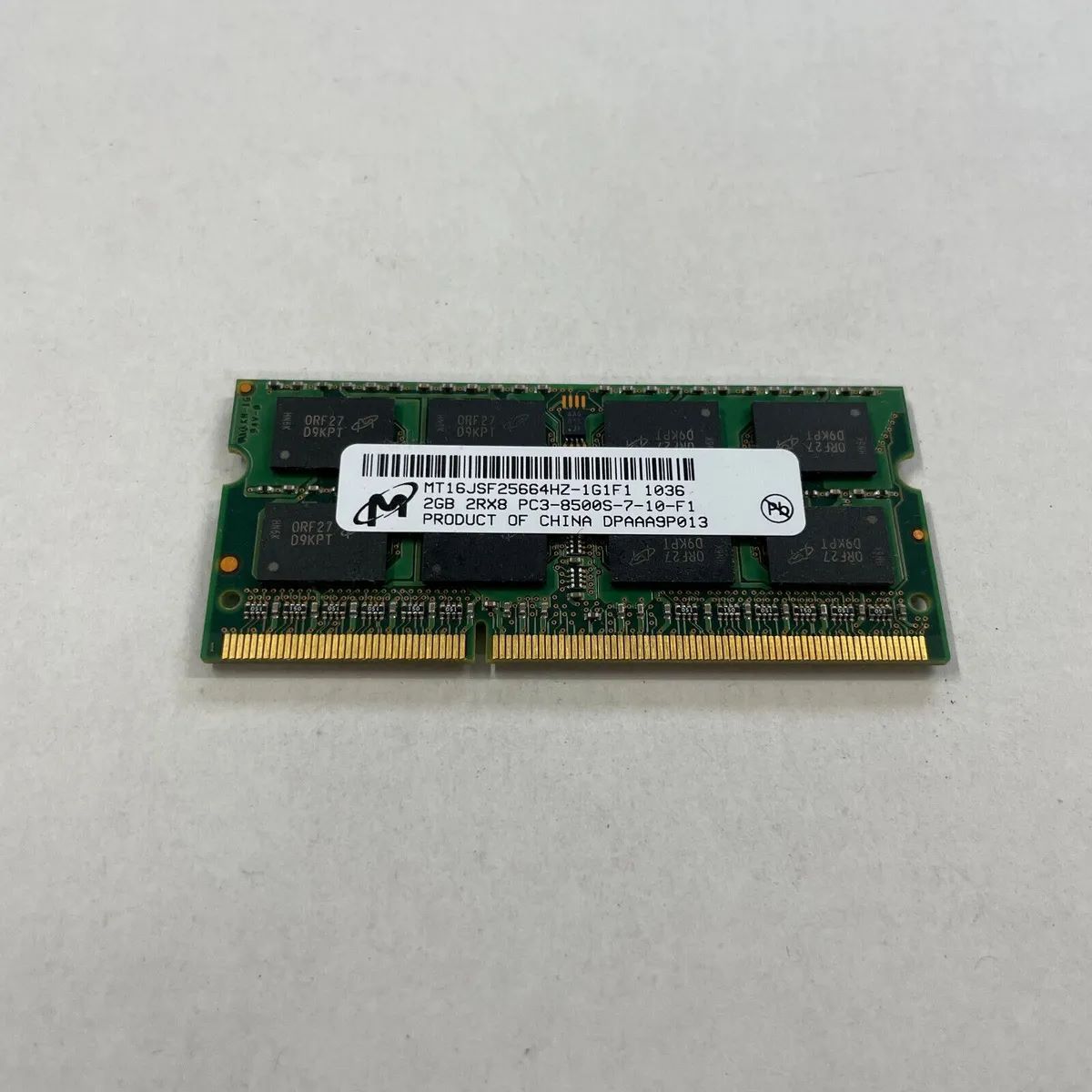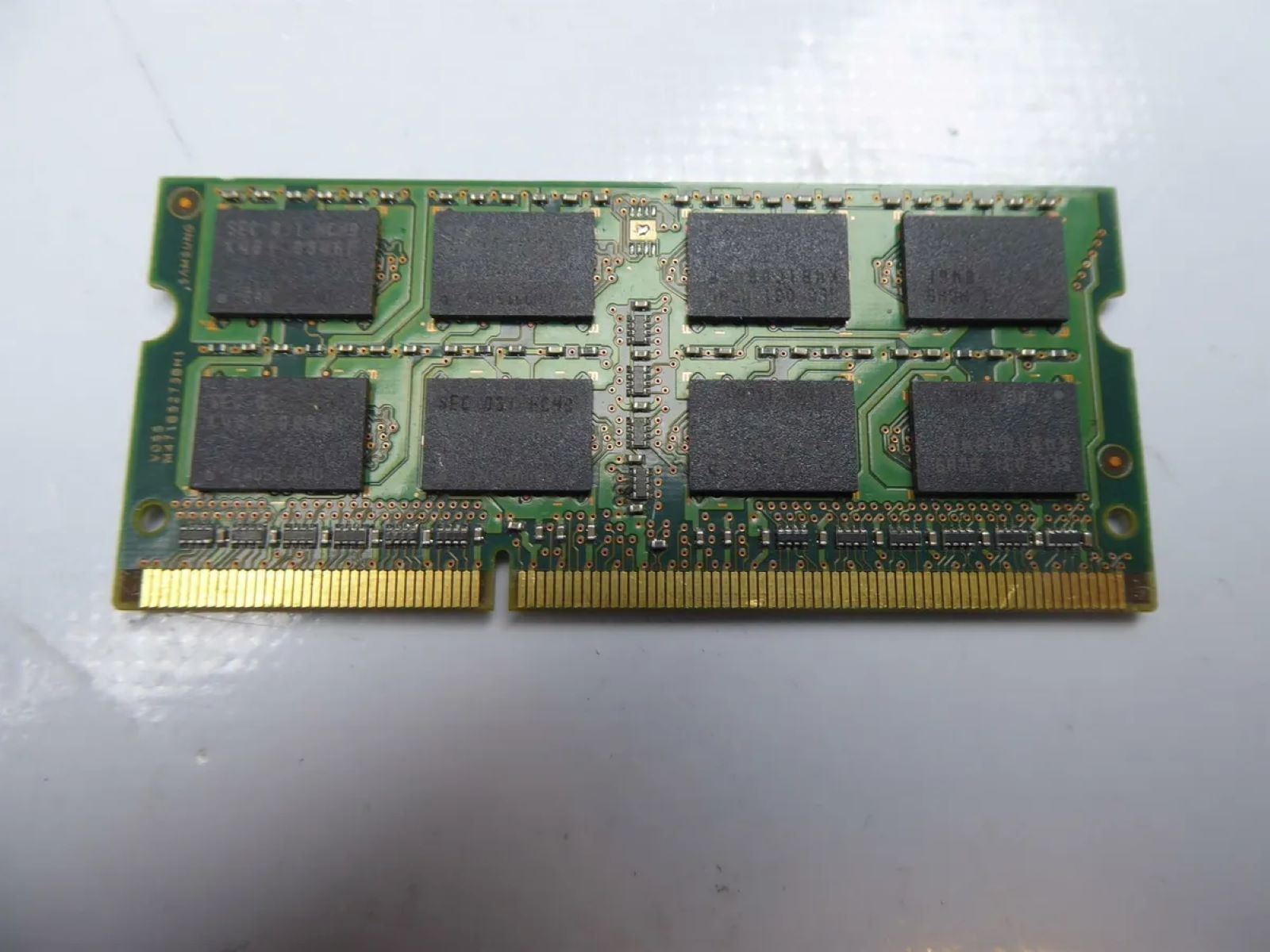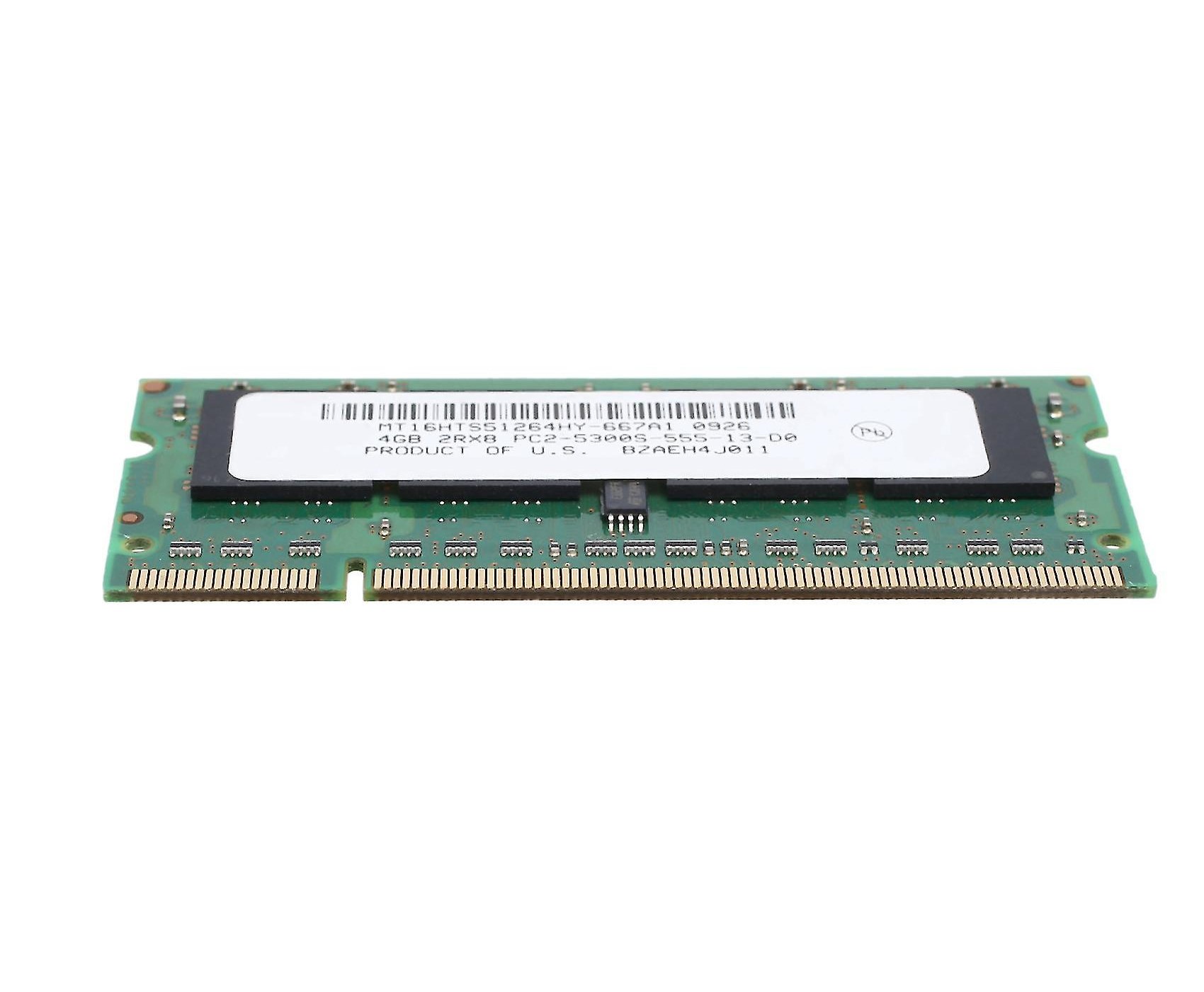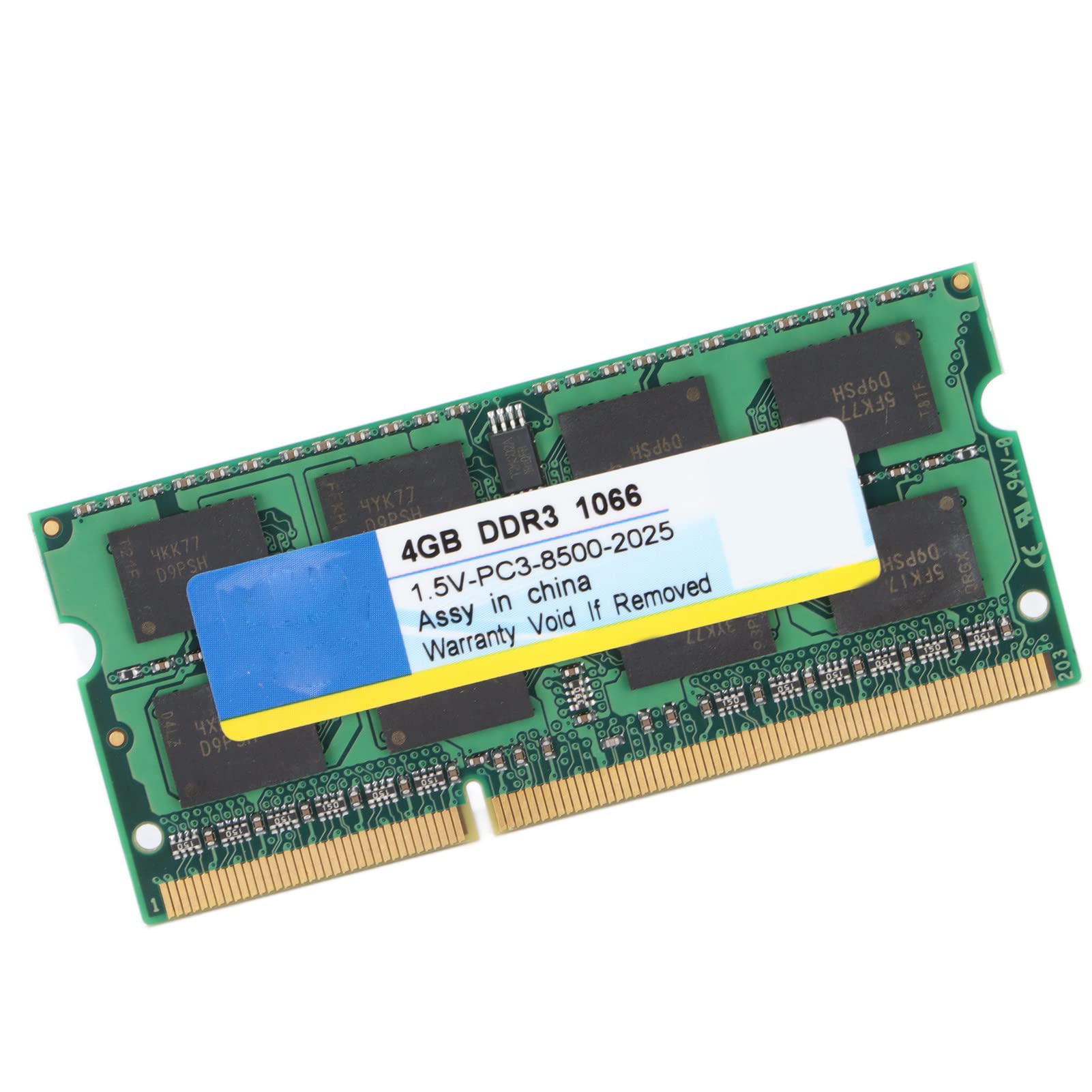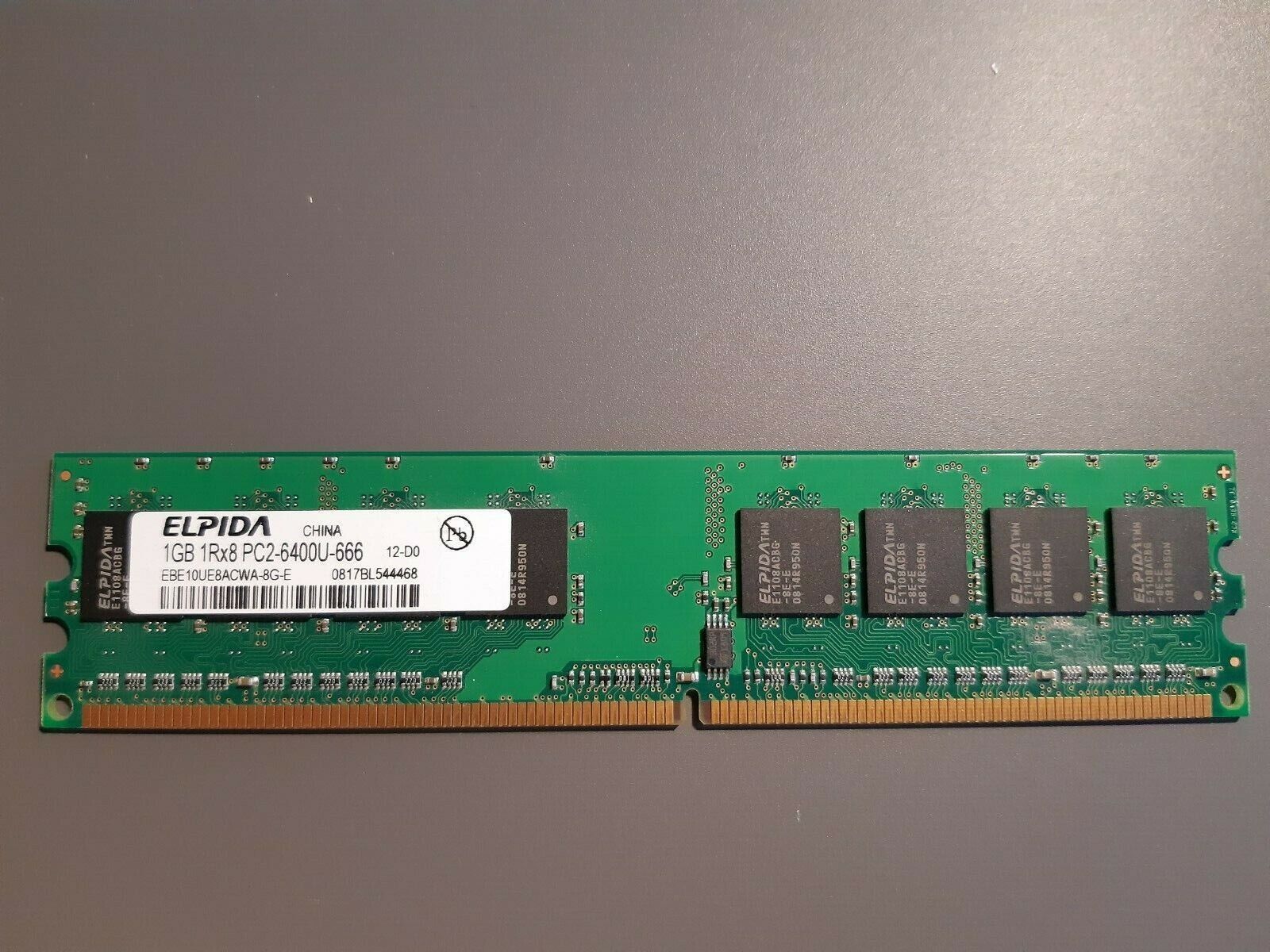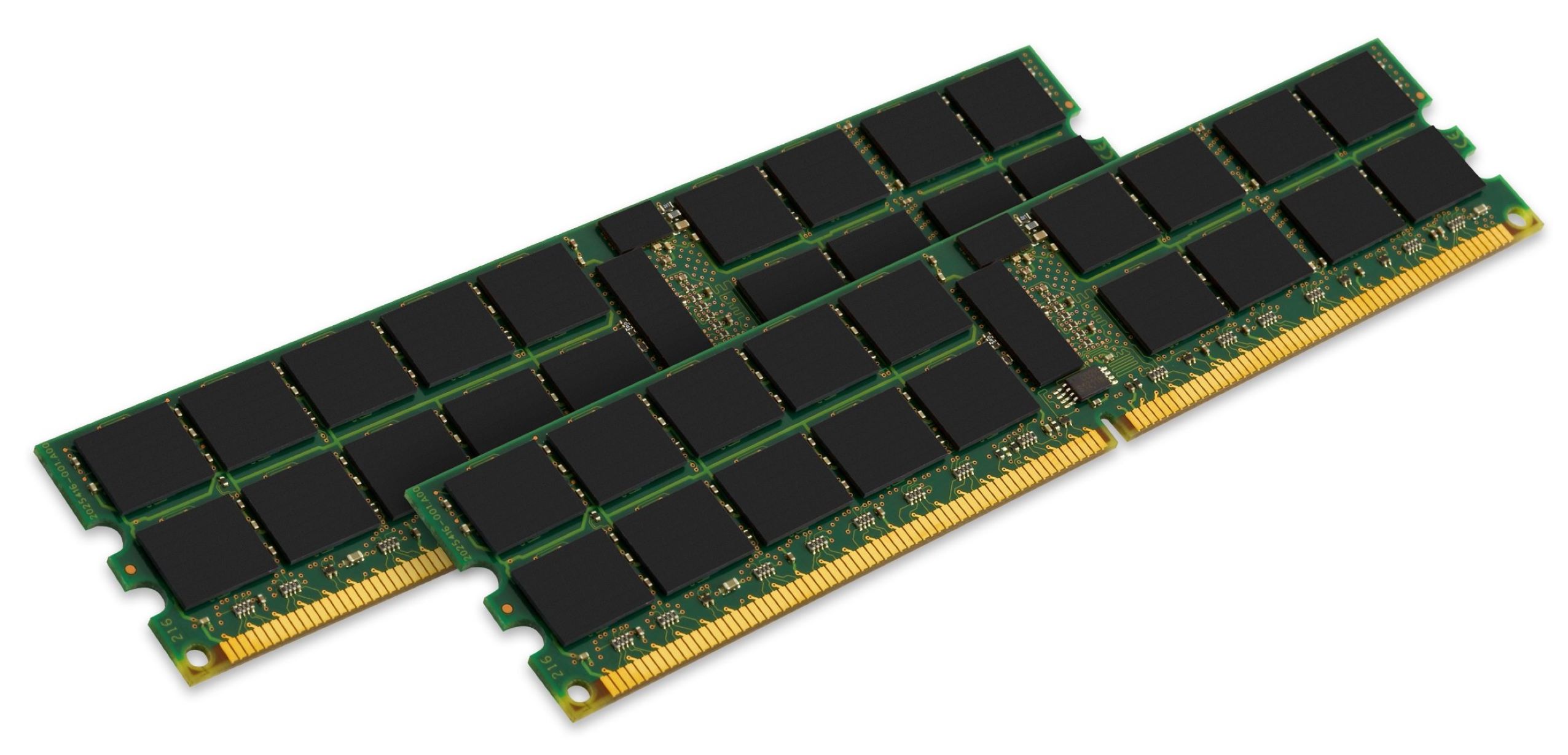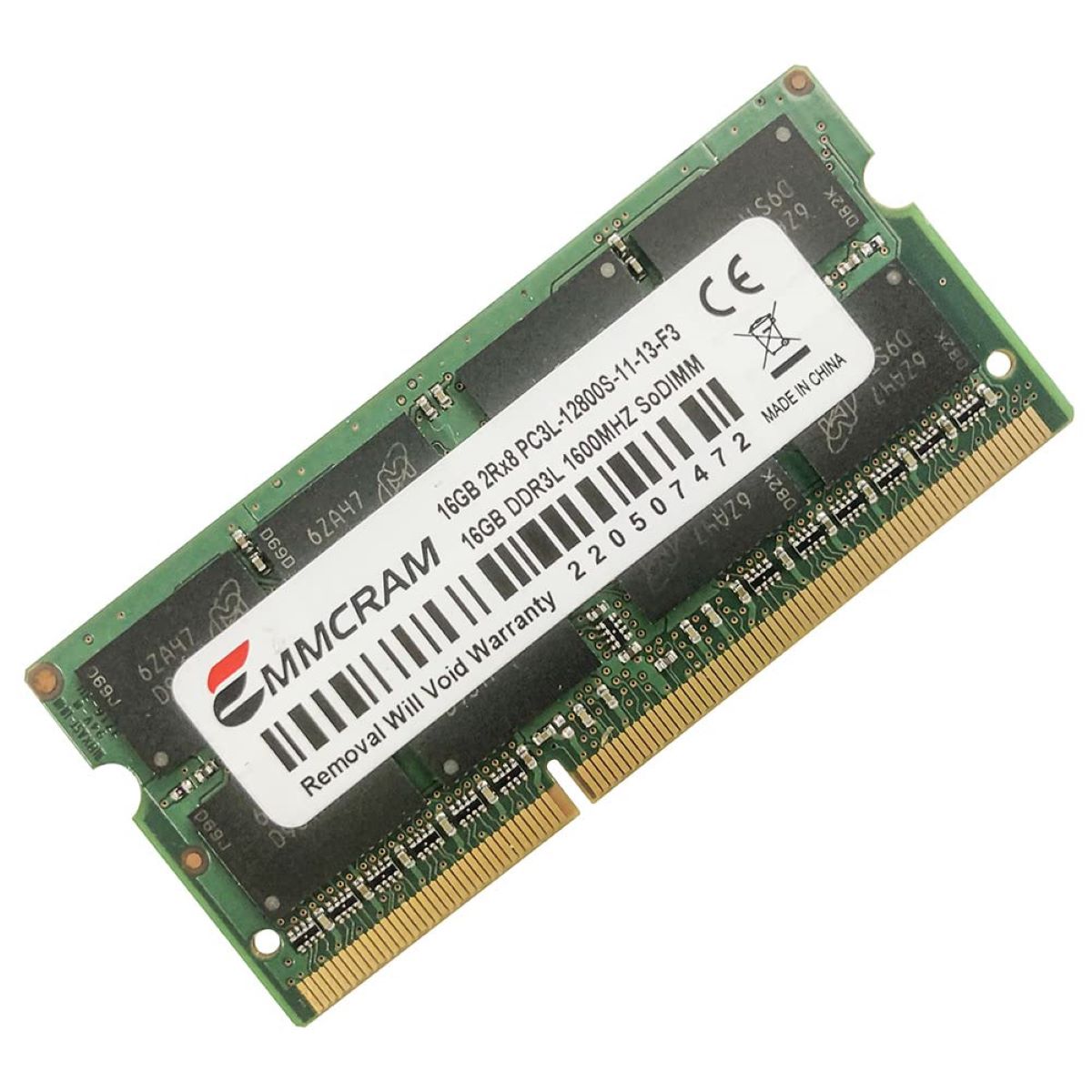Introduction
Welcome to the guide on how to make your 2GB RAM laptop faster. If you own a laptop with only 2GB of RAM, you may have noticed that it can sometimes feel sluggish and struggle to keep up with your tasks. But fear not, as there are several steps you can take to optimize your laptop’s performance and make it faster.
A laptop with limited RAM can be frustrating when it comes to multitasking or running memory-intensive programs. However, there are many ways to improve its speed without having to invest in expensive hardware upgrades. By implementing a few tweaks and optimizations, you can optimize your laptop’s performance and make it more responsive for your day-to-day needs.
This guide will walk you through various strategies to speed up your 2GB RAM laptop. From cleaning up your hard drive to adjusting system settings, upgrading your RAM, and optimizing software, we will cover numerous approaches to enhance performance. Whether you’re a student, a professional, or a casual user, these tips will help you get the most out of your laptop, enabling you to work more efficiently and navigate through programs smoothly.
Please note that while these suggestions are highly effective, their impact may vary depending on the hardware and software configuration of your specific laptop. It is recommended to try multiple methods and determine which ones provide the best results for your particular system.
Clean up your hard drive
One of the first steps to speeding up your 2GB RAM laptop is to clean up your hard drive. Over time, your hard drive can become cluttered with unnecessary files, which can slow down your system. Here are a few ways to effectively clean up your hard drive:
- Delete unneeded files: Start by going through your files and deleting any unnecessary documents, photos, videos, or other files that are taking up space on your hard drive. Be sure to empty the recycle bin or trash to completely remove these files from your system.
- Uninstall unused programs: Take a look at the programs installed on your laptop and uninstall any that you no longer need or use. These programs not only take up storage space but can also run background processes that consume system resources.
- Remove temporary files: Temporary files, such as those created by software installations or internet browsing, can accumulate over time and occupy considerable storage space. Use the Disk Cleanup utility (Windows) or a third-party tool like CCleaner to remove these temporary files and free up disk space.
- Organize your files: Create a logical folder structure and organize your files into appropriate folders. This not only helps you locate files quickly but also improves overall system performance by reducing the time it takes for the operating system to search for specific files.
- Use cloud storage: Consider moving some of your files to cloud storage services like Google Drive or Dropbox. Storing files in the cloud can free up valuable disk space on your laptop, reducing the load on your hard drive and improving overall performance.
By cleaning up your hard drive and removing unnecessary files, you can create more space for your operating system and applications to run efficiently. This will help speed up your 2GB RAM laptop and improve its overall performance.
Disable unnecessary startup programs
When you start your 2GB RAM laptop, various programs and utilities may automatically run in the background, consuming valuable system resources and slowing down your computer’s startup time. Disabling unnecessary startup programs can significantly improve your laptop’s performance. Here’s how:
- Identify startup programs: Open the Task Manager by pressing Ctrl + Shift + Esc (Windows) or Command + Spacebar, type “Activity Monitor,” and press Enter (Mac). Navigate to the “Startup” tab to view a list of programs that launch automatically when your laptop boots up.
- Disable unnecessary programs: Analyze the list of startup programs and identify any that you don’t need running in the background. Right-click on the program and select “Disable” or “Uncheck” to prevent it from launching at startup.
- Use a third-party startup manager: If managing startup programs through the Task Manager is complicated, you can use third-party software like CCleaner or Autoruns to have more control over which programs launch at startup. These tools provide a user-friendly interface to manage your startup applications effectively.
- Be cautious: Exercise caution when disabling startup programs. Some programs, such as antivirus software or essential system utilities, may be crucial for the proper functioning of your laptop. Only disable programs that you are confident are safe to disable.
By disabling unnecessary startup programs, you can reduce the load on your 2GB RAM laptop during the startup process. This will not only improve your laptop’s boot time but also free up system resources for smoother overall performance.
Uninstall unused programs
Over time, you may install numerous programs on your 2GB RAM laptop that you no longer need or use. These unused programs can take up valuable storage space and impact your laptop’s performance. To improve the speed and efficiency of your laptop, consider uninstalling unused programs using the following steps:
- Review installed programs: Go to the Control Panel (Windows) or the Applications folder (Mac) and review the list of installed programs. Take note of the programs that you no longer use or need.
- Uninstall from Control Panel (Windows): In the Control Panel, click on “Programs” and then “Programs and Features.” This will display a list of installed programs. Right-click on the program you want to uninstall and select “Uninstall.” Follow the on-screen instructions to complete the uninstallation process.
- Uninstall from Applications folder (Mac): Open the Applications folder and locate the program you want to uninstall. Click and drag the program to the Trash icon in the Dock. Alternatively, you can right-click on the program and select “Move to Trash.”
- Use third-party uninstaller: If you encounter difficulties uninstalling certain programs or want to ensure that all associated files and registry entries are removed, you can use third-party uninstaller software. Programs like Revo Uninstaller (Windows) or AppCleaner (Mac) can help you thoroughly uninstall programs and their associated files.
By uninstalling unused programs, you can reclaim storage space on your 2GB RAM laptop and streamline its performance. Removing unnecessary software reduces the load on your system, resulting in faster boot times and improved responsiveness when running other programs.
Remove temporary files
Temporary files are created by various processes on your 2GB RAM laptop as you use different applications and browse the internet. These files can accumulate over time and take up valuable storage space, causing your laptop to slow down. Removing temporary files regularly can help improve performance. Here are some ways to do it:
- Use the Disk Cleanup utility (Windows): Windows provides a built-in tool called Disk Cleanup that helps you identify and delete temporary files. To access it, go to the Start menu, search for “Disk Cleanup,” and open the tool. Select the drive you want to clean, and then choose the files you want to delete, such as temporary internet files, system files, and downloaded program files.
- Use a third-party cleaning tool: If you prefer a more comprehensive cleaning process, you can use third-party software like CCleaner. CCleaner scans your laptop for temporary files, cache data, and other unnecessary files, allowing you to remove them with a few clicks.
- Clean browser cache: Web browsers store temporary files, cookies, and cached data to improve website loading times. However, over time, this cache can become bloated and impact performance. Clearing the browser cache regularly can help improve browsing speed. Each browser has its own cache-clearing options, which can usually be found in the settings or preferences menu.
- Delete files from the Downloads folder: The Downloads folder can accumulate various files, including downloaded documents, images, and installers. Review the contents of this folder and delete any files you no longer need, freeing up storage space.
- Automate the process: To ensure regular removal of temporary files, you can set up automation tools or scripts that automatically perform this task. This way, you won’t have to remember to clean up your laptop manually.
By removing temporary files, you can free up storage space on your 2GB RAM laptop and improve overall system performance. This will result in faster load times for applications, smoother browsing experiences, and a more responsive laptop overall.
Defragment your hard drive
Defragmenting your hard drive is an important step in optimizing your 2GB RAM laptop’s performance. Over time, files on your hard drive can become fragmented, meaning that different parts of a single file are scattered across the disk. This can slow down your laptop as it takes more time to retrieve fragmented files. Here’s how to defragment your hard drive:
- Open Disk Defragmenter (Windows): Windows provides a built-in tool called Disk Defragmenter. To access it, go to the Start menu, search for “Disk Defragmenter,” and open the tool.
- Select the drive: In the Disk Defragmenter window, select the drive you want to defragment. It is recommended to defragment your primary drive, usually the C: drive.
- Analyze the drive: Click on the “Analyze” button to determine if the drive needs defragmentation. The tool will evaluate the fragmentation level of the selected drive and provide a visual representation of the analysis.
- Defragment the drive: If the Disk Defragmenter determines that the drive is fragmented, click on the “Defragment” button to start the defragmentation process. This may take some time, depending on the size of your drive and the level of fragmentation.
- Leave your laptop plugged in: It is recommended to keep your laptop plugged into a power source during the defragmentation process to avoid any interruptions that could potentially corrupt the drive.
- Enable automatic defragmentation: To maintain optimal performance, consider enabling automatic defragmentation. This way, Windows will regularly defragment your hard drive in the background, ensuring that files remain organized and accessible.
Defragmenting your hard drive can significantly improve the access speed of files on your 2GB RAM laptop, resulting in faster overall performance. By rearranging fragmented files on your disk, you can reduce the time it takes for your laptop to read and write data, leading to improved efficiency and responsiveness.
Upgrade your RAM
If your 2GB RAM laptop is still experiencing performance issues even after implementing various optimization techniques, it may be time to consider upgrading your RAM. Increasing the amount of RAM in your laptop can significantly improve its speed and multitasking capabilities. Here’s what you need to know about upgrading your RAM:
- Check the maximum supported RAM: Before purchasing new RAM modules, determine the maximum amount of RAM your laptop can support. You can consult the manufacturer’s website, check the laptop’s documentation, or use online system scanners that provide information about compatible memory upgrades.
- Choose the right RAM type: There are different types of RAM, such as DDR3 and DDR4, with varying speeds and compatibility. Make sure to select the appropriate RAM type that is compatible with your laptop’s motherboard.
- Select the desired RAM capacity: Decide on the amount of RAM you want to install based on your usage requirements. For improved performance, it is recommended to aim for at least 4GB or higher. Keep in mind that the more RAM you have, the more programs and tasks your laptop can handle simultaneously.
- Install the new RAM modules: To install the new RAM, shut down your laptop, disconnect the power cable, and remove the battery (if applicable). Locate the RAM slots on your laptop’s motherboard and insert the new RAM modules carefully, ensuring they are securely inserted. Refer to your laptop’s manual or seek guidance from a professional if needed.
- Test the new RAM: After installing the new RAM, power on your laptop and check if it recognizes the increased memory. You can verify this in the system settings or with third-party software designed for RAM testing.
Upgrading your RAM can significantly enhance the performance of your 2GB RAM laptop, allowing for smoother multitasking, faster program loading times, and improved overall responsiveness. However, it’s important to ensure compatibility and follow proper installation procedures to avoid any complications.
Use lightweight software
To optimize the performance of your 2GB RAM laptop, consider using lightweight software applications. Lightweight software is designed to consume fewer system resources and run efficiently on low-spec devices. By utilizing such software, you can improve the speed and responsiveness of your laptop. Here are some tips for finding and using lightweight software:
- Research lightweight alternatives: When looking for software applications, research and identify lightweight alternatives to popular programs. Many software categories have lightweight options available that offer similar functionality without the resource-intensive nature.
- Check system requirements: Before installing any software, ensure that it meets the system requirements of your laptop. Lightweight software typically has lower memory and processing power demands, making it more suitable for 2GB RAM laptops.
- Avoid resource-heavy features: When using software applications, avoid enabling or using resource-heavy features that you do not need. For instance, in video editing software, disabling complex effects or rendering options can help reduce the strain on your laptop’s resources.
- Use online or cloud-based alternatives: Online or cloud-based applications, such as Google Docs for word processing or Dropbox for file storage, can be lighter on system resources since they offload most of the processing and storage to remote servers.
- Utilize lightweight web browsers: Web browsing can consume a significant amount of system resources. Consider using lightweight web browsers, such as Mozilla Firefox or Google Chrome (with minimal extensions), to improve browsing performance on your 2GB RAM laptop.
- Opt for portable software versions: Some software applications offer portable versions that can be run directly from a USB drive without requiring installation on your laptop. These versions are often lightweight and don’t impact your system’s overall performance as much.
By utilizing lightweight software, you can reduce the strain on your laptop’s limited resources and enhance its speed and performance. Whether it’s productivity tools, media players, or web browsers, choosing lightweight alternatives can make a significant difference in your overall computing experience.
Adjust visual effects settings
Adjusting the visual effects settings on your 2GB RAM laptop can have a noticeable impact on its performance. Windows operating systems, for instance, offer various visual effects that can consume system resources. By optimizing these settings, you can improve the speed and responsiveness of your laptop. Here’s how:
- Open the Performance Options: Right-click on the “My Computer” or “This PC” icon on your desktop and select “Properties.” From the left sidebar, click on “Advanced system settings.” In the System Properties window, navigate to the “Advanced” tab and click on “Settings” under the “Performance” section.
- Select the appropriate settings: In the Performance Options window, you have two options: “Let Windows choose what’s best for my computer” and “Adjust for best performance.” Choosing the first option allows Windows to automatically adjust the visual effects settings based on your laptop’s specifications. Selecting the second option disables all visual effects except for the basic ones.
- Customize visual effects: If you prefer a more personalized approach, you can select the “Custom” option in the Performance Options window. This allows you to choose specific visual effects that are important to you while disabling others that consume resources. For instance, you can disable animations, shadows, and other visually appealing elements that are not essential to your workflow.
- Disable Aero: In Windows 7, disabling the Aero theme can significantly improve performance on 2GB RAM laptops. Right-click on the desktop and select “Personalize.” From the available themes, choose a basic high-contrast theme or a non-Aero theme.
- Experiment and assess performance: After adjusting the visual effects settings, use your laptop and assess its performance. If you still experience slowdowns or lags, consider disabling more visual effects or choosing the “Adjust for best performance” option for maximum performance.
By adjusting the visual effects settings on your 2GB RAM laptop, you can allocate more system resources towards critical tasks and improve overall performance. The sacrifice in visual appeal is often a worthwhile trade-off for enhanced speed and responsiveness.
Use a solid-state drive (SSD)
One of the most effective and impactful upgrades you can make to your 2GB RAM laptop is replacing the traditional hard disk drive (HDD) with a solid-state drive (SSD). SSDs offer significant performance benefits over HDDs and can greatly improve the speed and responsiveness of your laptop. Here’s why you should consider using an SSD:
- Faster read and write speeds: SSDs use flash memory instead of spinning disks, resulting in much faster read and write speeds. This means quicker boot times, faster application launches, and swift file transfers, enhancing the overall performance of your laptop.
- Improved multitasking: With an SSD, your 2GB RAM laptop can handle multiple tasks more efficiently. Applications will load and switch faster, and you’ll experience smoother multitasking without the delays commonly associated with HDDs.
- Reduced power consumption: SSDs are more power-efficient compared to HDDs since they have no moving parts, resulting in lower power consumption and longer battery life for your laptop. This is especially beneficial for mobile users who rely on their laptops when on the go.
- Enhanced durability and reliability: Since SSDs have no mechanical components, they are less prone to failures caused by physical shocks or vibrations. This increased durability makes them ideal for portable laptops that are frequently moved or subjected to rough handling.
- No noise and less heat: Unlike HDDs, which produce noise due to spinning disks, SSDs operate silently. Additionally, they generate less heat, allowing your laptop to run cooler and potentially extending the lifespan of other components.
- Choose the right SSD: When selecting an SSD, consider factors such as capacity, interface (SATA or NVMe), and price. Look for SSD models that offer a good balance between storage size and affordability, ensuring compatibility with your laptop’s specifications.
- Backup and migration: Before replacing your HDD with an SSD, make sure to back up your important data. You can then transfer the contents of your HDD to the new SSD using cloning software or perform a fresh installation of your operating system and applications.
By upgrading to an SSD, you can maximize the performance potential of your 2GB RAM laptop. The improved speed, responsiveness, and durability provided by an SSD will greatly enhance your overall computing experience.
Update your operating system and drivers
To ensure optimal performance and security on your 2GB RAM laptop, it’s essential to regularly update your operating system and drivers. Software updates bring bug fixes, performance enhancements, and new features that can significantly improve the stability and efficiency of your laptop. Here’s why you should prioritize updating your operating system and drivers:
- Bug fixes and stability improvements: Operating system updates often include bug fixes that address known issues, improving overall system stability. By keeping your operating system up to date, you can minimize crashes, freezes, and unexpected errors on your laptop.
- Performance enhancements: Updates for your operating system and drivers can introduce performance optimizations that can benefit your 2GB RAM laptop. These updates may include memory management improvements, better hardware utilization, and more efficient power management techniques, resulting in a smoother and faster user experience.
- Security patches: Operating system updates often contain important security patches that safeguard your laptop against vulnerabilities. Staying current with these updates helps protect your laptop from malware, viruses, and other security threats, ensuring the safety of your data and sensitive information.
- Improved hardware compatibility: As new technologies and hardware components are introduced, operating system updates ensure better compatibility with the latest devices. Updating your system and drivers ensures that your 2GB RAM laptop can work seamlessly with new peripherals, such as printers, scanners, or external storage devices.
- Automatic driver updates: Many operating systems have built-in mechanisms that automatically update drivers for various hardware components. These updates can fix compatibility issues, enhance performance, and deliver new features. Ensure that your laptop is set to receive automatic driver updates, or periodically check for driver updates manually.
- Regular system updates: Apart from major operating system updates, regularly installing smaller system updates is equally important. These updates address specific vulnerabilities, provide minor enhancements, and ensure that your laptop is up to date with the latest patches and improvements.
Updating your operating system and drivers is a crucial step in maintaining optimal performance and security on your 2GB RAM laptop. By staying current with the latest updates, you can benefit from performance enhancements, improved stability, increased compatibility, and enhanced protection against security threats.
Remove unnecessary browser extensions
If you notice that your 2GB RAM laptop’s web browser is running slowly or experiencing performance issues, one possible culprit could be the presence of unnecessary browser extensions. These extensions, though often helpful, can consume valuable system resources and affect your browsing experience. To optimize your laptop’s performance, it’s important to review and remove any unnecessary browser extensions. Here’s how:
- Access the browser extensions menu: Open your web browser and navigate to the extensions or add-ons menu. This can usually be found in the browser’s settings or preferences section.
- Review the installed extensions: Take the time to go through the list of installed extensions. Evaluate each extension and consider whether it’s necessary, actively used, or if it serves a purpose that can’t be fulfilled through other means.
- Remove unwanted extensions: Identify extensions that you no longer need or use. You can typically remove an extension by clicking on a disable or uninstall button next to each listed extension.
- Consider disabling instead of removing: If you’re unsure about removing an extension completely, disable it instead. Disabling an extension temporarily turns it off but allows you to reactivate it later if necessary.
- Be cautious with newly installed extensions: After removing unnecessary extensions, be mindful of the ones you install in the future. Consider the potential impact on your laptop’s performance and only install extensions that are truly beneficial.
- Utilize browser extension management tools: Some modern browsers offer built-in tools or extensions that help manage and optimize other extensions. These tools can provide insights into the performance impact of each extension, allowing you to make informed decisions about what to keep or remove.
- Regularly review and update extensions: Make it a habit to periodically review your extensions and update them to their latest versions. This ensures you have the most up-to-date features, bug fixes, and security enhancements, which can contribute to better browser performance.
By removing unnecessary browser extensions, you can free up system resources on your 2GB RAM laptop, resulting in improved browser speed and smoother browsing experiences. Take the time to regularly review your extensions and ensure that only the ones you truly need are installed, optimizing your laptop’s overall performance.
Clear your browser cache and history
Clearing your browser cache and history on your 2GB RAM laptop is an effective way to enhance browsing speed, free up storage space, and maintain privacy. Over time, the cache and browsing history can accumulate unnecessary data, causing your browser to slow down. Here’s how you can clear your browser cache and history:
- Access the browser’s settings: Open your web browser and navigate to the settings or preferences menu. Typically, this can be found by clicking on the three-dot menu icon or the gear icon in the top-right corner of the browser window.
- Clear browsing data: Within the settings menu, look for options related to clearing browsing data or privacy settings. These options may be named differently depending on the browser you are using.
- Select the data to clear: Choose the types of data you want to clear, such as browsing history, cache, cookies, and saved form data. You can often select a time range to clear, such as the past hour, day, week, or all time.
- Click on clear or delete: Once you have selected the data to clear, click on the “Clear” or “Delete” button. Depending on the amount of data, this process may take a few moments.
- Consider clearing cache on exit: Some browsers offer an option to automatically clear the cache and browsing data when you exit the browser. Enabling this setting ensures that your browsing data is regularly cleared, enhancing privacy and maintaining optimal browser performance.
- Clear cache of specific websites: If you are experiencing performance issues with certain websites, you can clear the cache and data specifically for those sites. In the browser settings, look for options related to site data or individual site settings.
- Restart your browser: After clearing the cache and browsing data, restart your browser to ensure that the changes take effect.
By clearing your browser cache and history, you can remove temporary files, outdated information, and accumulated data that may be slowing down your 2GB RAM laptop’s browsing experience. This process can help improve page load times, optimize browser performance, and protect your privacy while browsing the internet.
Optimize your web browser settings
Optimizing your web browser settings on your 2GB RAM laptop is essential to ensure smooth and efficient browsing. By making a few adjustments, you can enhance performance, improve security, and optimize the overall browsing experience. Here are some tips to optimize your web browser settings:
- Update your browser: Ensure that you are using the latest version of your web browser. Updates often include performance improvements, bug fixes, and security enhancements.
- Manage your extensions: Review and disable or remove any unnecessary or resource-intensive browser extensions. Keep only the ones you truly need for a more streamlined browsing experience.
- Limit open tabs: Having multiple tabs open simultaneously can consume valuable system resources. Limit the number of open tabs to those that are essential, closing unnecessary tabs to free up memory.
- Configure browser caching: Adjust your browser’s caching settings to strike a balance between minimizing page load times and avoiding excessive storage usage. Caching can improve performance by storing frequently accessed data locally.
- Disable or limit plug-ins: Certain plug-ins, such as Adobe Flash, can consume a significant amount of resources. Consider disabling or limiting the use of plug-ins that are not essential for your browsing needs.
- Enable hardware acceleration: If your browser supports it, enable hardware acceleration to offload some graphical rendering tasks to your computer’s GPU. This can improve the performance of graphics-intensive webpages.
- Block intrusive ads and scripts: Add browser extensions or enable built-in features to block intrusive advertisements and scripts. This can reduce the amount of data your browser needs to load and improve overall page load times.
- Clear cookies and browsing data: Regularly clear cookies and browsing data to remove stored information that can slow down your browser and compromise your privacy. Follow the steps mentioned earlier to clear your cache and browsing history.
- Enable pop-up blocker: Activate your browser’s pop-up blocker to prevent unwanted pop-up windows from appearing. This will help declutter your browsing experience and reduce the chances of encountering malicious pop-ups.
- Enable privacy settings: Explore the privacy settings of your browser and customize them to your preference. Consider disabling third-party cookies and adjusting tracking prevention settings to enhance your online privacy.
By optimizing your web browser settings, you can enhance the performance, speed, and security of your 2GB RAM laptop. These adjustments will enable a smoother browsing experience while ensuring that your browser operates efficiently within the limited system resources available.
Disable unnecessary background processes
Disabling unnecessary background processes on your 2GB RAM laptop can help improve its overall performance by conserving system resources. Background processes, often initiated by various applications and services, can consume valuable memory and CPU usage, causing your laptop to slow down. By disabling unnecessary processes, you can free up resources and optimize your laptop’s performance. Here’s how:
- Identify resource-intensive processes: Open the Task Manager by pressing Ctrl + Shift + Esc (Windows) or Command + Spacebar, type “Activity Monitor,” and press Enter (Mac). Navigate to the “Processes” or “CPU” tab to view running processes and identify resource-intensive ones.
- Research processes: For unfamiliar processes, conduct a quick online search to determine their purposes and whether they are critical to system functionality. Ensure that you are not disabling any essential processes that are necessary for your laptop’s proper operation.
- End or disable unnecessary processes: Right-click on a process in the Task Manager or Activity Monitor and select “End Task” (Windows) or “Quit” (Mac) to stop a process. You can also disable processes from starting up automatically using the “Startup” tab in the Task Manager (Windows) or the “Login Items” section in System Preferences (Mac).
- Be cautious: Exercise caution when disabling processes, especially those related to system operations or security. Disable only processes that you are confident do not affect the proper functioning of your laptop.
- Manage startup processes: Review the processes that are set to launch at startup and disable any unnecessary ones. This can be done through the “Startup” or “Login Items” settings mentioned earlier.
- Update software and drivers: Outdated software and drivers can sometimes lead to resource-intensive background processes. Ensure that your laptop has the latest software updates and driver versions installed to avoid such issues.
- Remove unused applications: Uninstall applications that you no longer use, as they may run background processes that consume system resources. This can help declutter your system and improve performance.
- Regularly restart your laptop: Restarting your laptop regularly can help clear out unnecessary background processes and free up memory. This can be especially useful after installing or uninstalling software.
By disabling unnecessary background processes, you can significantly optimize the performance of your 2GB RAM laptop. This will result in improved multitasking capabilities, faster response times, and a more efficient overall computing experience.
Use a reliable antivirus program
Using a reliable antivirus program is crucial for maintaining the security and performance of your 2GB RAM laptop. Antivirus software helps protect your laptop against malware, viruses, and other online threats, ensuring a safe browsing experience. Additionally, an efficient antivirus program can minimize system resource usage, optimizing your laptop’s performance. Here’s why you should use a reliable antivirus program:
- Real-time protection: Antivirus software provides real-time scanning to detect and block malicious files and websites before they can harm your laptop. This safeguard protects your sensitive data and prevents potential performance issues caused by malware infections.
- Automatic updates: A reliable antivirus program regularly receives updates to its virus definitions. These updates ensure that the antivirus software can identify and block the latest threats, keeping your laptop secure against evolving malware.
- System optimization: Modern antivirus programs are designed with performance in mind. They utilize advanced scanning techniques that minimize system resource consumption, allowing your 2GB RAM laptop to operate smoothly without significant performance degradation.
- Customization options: Many antivirus programs offer customizable scanning schedules and options. You can adjust scan frequencies and the level of scanning depth to balance system performance and thorough virus detection.
- Web protection features: Some antivirus programs also provide additional web protection features such as safe browsing extensions, internet security, and anti-phishing mechanisms. These features protect you from online threats while browsing the internet, enhancing your overall online safety.
- Malware removal and cleanup: In the unfortunate event that your laptop becomes infected with malware, reliable antivirus software can help you identify and remove the malicious files. This cleanup process can restore your laptop’s performance and reverse any adverse effects caused by the malware.
- Regular scans and system checks: Schedule regular antivirus scans to ensure the continuous protection of your laptop. These scans can identify any potential threats or issues and provide you with peace of mind regarding your laptop’s security and performance.
- Educate and protect: Beyond the technical benefits, reliable antivirus software often includes educational resources and advice to help you navigate the digital landscape more safely. It can educate you about potential threats and provide guidance on how to protect your online presence.
Using a reliable antivirus program is a critical step in safeguarding your 2GB RAM laptop against malware and optimizing its performance. By providing real-time protection, automatic updates, and efficient scanning, antivirus software ensures that your laptop remains secure while operating smoothly and delivering a dependable computing experience.
Enable Windows ReadyBoost
If you’re looking to improve the performance of your 2GB RAM laptop without upgrading the physical memory, enabling Windows ReadyBoost can be a viable solution. ReadyBoost is a feature available in Windows operating systems that helps boost system performance by using external storage devices as a cache. By utilizing a USB flash drive or an SD card, you can enhance your laptop’s performance. Here’s how to enable Windows ReadyBoost:
- Connect a compatible storage device: Insert a USB flash drive or an SD card into an available USB port or memory card slot on your laptop.
- Check the device compatibility: Right-click on the drive in Windows Explorer, select “Properties,” and navigate to the “ReadyBoost” tab. Windows will assess the device’s compatibility with ReadyBoost and indicate whether it meets the necessary requirements.
- Enable ReadyBoost: If your storage device is compatible, select the option to “Use this device” under the ReadyBoost tab. You can adjust the amount of space you want to allocate for ReadyBoost or let Windows automatically manage it. Typically, it is recommended to allocate as much space as possible.
- Apply the changes: Click on “Apply” or “OK” to enable ReadyBoost. Windows will begin using the external storage device as a cache to improve system performance.
- Monitor ReadyBoost performance: After enabling ReadyBoost, keep an eye on your laptop’s performance to assess any improvements. You may notice faster application launches, reduced system lag, and improved multitasking capabilities.
- Periodically review and update: Over time, you may want to review and adjust your ReadyBoost settings. If you find that you need more or less cache space, you can revisit the ReadyBoost settings and make the necessary changes.
Enabling Windows ReadyBoost can be particularly beneficial for 2GB RAM laptops as it allows you to utilize external storage devices to augment your laptop’s memory. While ReadyBoost doesn’t replace physical RAM, it can alleviate memory constraints and enhance performance. It is an effective solution for laptops with limited RAM that require a performance boost in a cost-effective manner.
Use a virtual memory boost
If your 2GB RAM laptop is struggling with memory-intensive tasks or frequently runs out of physical memory, utilizing a virtual memory boost can help alleviate performance issues. Virtual memory, also known as the page file, is a feature in the Windows operating system that uses a portion of your hard drive as additional memory. By optimizing your virtual memory settings, you can enhance your laptop’s performance. Here’s how to use a virtual memory boost:
- Access virtual memory settings: Right-click on “My Computer” or “This PC” icon, select “Properties,” and navigate to the “Advanced system settings” tab. In the System Properties window, click on the “Settings” button under the “Performance” section, and then go to the “Advanced” tab.
- Modify virtual memory settings: In the Performance Options window, click on the “Change” button in the Virtual memory section. By default, Windows manages the virtual memory automatically, but you can choose to customize the settings.
- Allocate virtual memory: Uncheck the option that says “Automatically manage paging file size for all drives.” Select the drive containing your operating system (usually the C: drive) and choose the “Custom size” option.
- Specify the initial and maximum size: Set the initial size (in megabytes) to the same value as the recommended size displayed by Windows. For the maximum size, you can either set it to a higher value (e.g., 1.5 times the size of your physical RAM) or let Windows manage it by selecting “System managed size.”
- Apply the changes: Click “Set” and then “OK” to apply the new virtual memory settings. Windows will prompt you to restart your laptop for the changes to take effect.
- Monitor virtual memory usage: After implementing the virtual memory boost, keep an eye on your laptop’s performance and observe any improvements. You should notice that memory-intensive tasks are handled more efficiently, with reduced instances of low memory warnings or program crashes.
- Adjust settings if necessary: If you continue to experience memory-related issues, you may need to revisit the virtual memory settings and consider increasing the initial and maximum size values. Experiment with different values to find the optimal configuration for your specific workload.
Utilizing a virtual memory boost can help alleviate the limitations of physical RAM on your 2GB RAM laptop. By effectively managing the virtual memory settings, you can optimize your laptop’s performance and allow it to handle memory-intensive tasks more effectively. This allows you to work with larger software applications or multitask efficiently, even with limited physical memory.
Restart regularly
Restarting your 2GB RAM laptop regularly is a simple yet effective way to maintain its performance and resolve various system issues. Over time, background processes, memory leaks, and software glitches can accumulate, causing your laptop to slow down. Restarting your laptop helps clear these accumulated processes and refreshes the system, leading to improved performance. Here’s why you should restart your laptop regularly:
- Memory management: Restarting your laptop clears the RAM, freeing up memory that may have been consumed by various processes. This allows your laptop to start fresh and ensures that memory resources are allocated efficiently.
- Closing unnecessary processes: When you restart your laptop, any unnecessary background processes that may have been running are terminated. This helps free up system resources, ensuring that your laptop runs smoothly without unnecessary strain on the CPU and memory.
- Fixing software glitches: Some software applications may encounter issues and stop functioning correctly, resulting in degraded performance. Restarting your laptop allows these applications to start fresh and resolve any temporary glitches that may have occurred.
- Applying system updates: Some software updates require a system restart to take effect. By regularly restarting your laptop, you ensure that these updates are properly applied, improving the security and stability of your operating system and the installed software.
- Clearing cached data: Restarting your laptop clears cached data stored by various applications and the operating system. This helps ensure that the laptop is not burdened by unnecessary temporary files, leading to improved performance and efficient storage utilization.
- Preventing memory leaks: Extended periods of laptop use may sometimes result in memory leaks, where programs do not free up allocated memory properly. Restarting your laptop prevents memory leaks from accumulating and helps maintain stable performance.
- Keeping the laptop cool: Regularly restarting your laptop gives it an opportunity to cool down. This can be especially helpful for 2GB RAM laptops with limited cooling capabilities, ensuring that the components operate at their optimal temperature and avoid overheating.
- Overall performance improvement: When you restart your 2GB RAM laptop, you give it a fresh start, allowing it to run more efficiently and effectively handle the tasks and applications you use daily. This results in an overall performance improvement and a smoother user experience.
Make it a habit to restart your 2GB RAM laptop on a regular basis, such as at the end of each day or at least a few times a week. By doing so, you can keep your laptop running optimally, maintain stability, and ensure efficient use of system resources.
Conclusion
Improving the performance of your 2GB RAM laptop is essential for a smooth and efficient computing experience, even with limited resources. By implementing the various strategies outlined in this guide, you can optimize your laptop’s performance without the need for expensive hardware upgrades. From cleaning up your hard drive to enabling Windows ReadyBoost and utilizing virtual memory, each step plays a crucial role in enhancing your laptop’s functionality.
Cleaning up your hard drive, disabling unnecessary startup programs, and removing unused applications help free up storage space and reduce system clutter. This results in faster boot times and more efficient resource allocation.
Optimizing your web browser settings, including clearing cache and disabling unnecessary extensions, helps improve browsing speed and responsiveness, ensuring a seamless online experience. Regularly updating your operating system and drivers, using a reliable antivirus program, and restarting your laptop are vital for maintaining the security and stability of your system.
Additionally, exploring options like upgrading your RAM or using solid-state drives (SSDs) can significantly amplify your laptop’s performance, making it faster and more capable of handling demanding tasks. By making these adjustments, you can overcome the limitations of a 2GB RAM laptop and ensure that it performs optimally for your daily needs.
Remember, the impact of each strategy can vary depending on your specific laptop configuration and usage patterns. It is recommended to try different approaches and find the combination that works best for your 2GB RAM laptop. With a little effort and attention to detail, you can breathe new life into your laptop and enjoy a smoother, more efficient computing experience.







